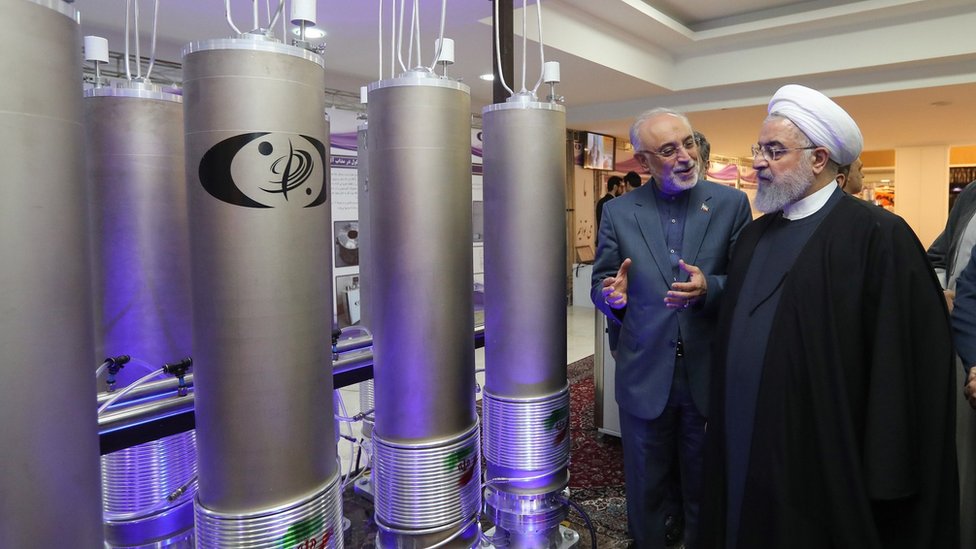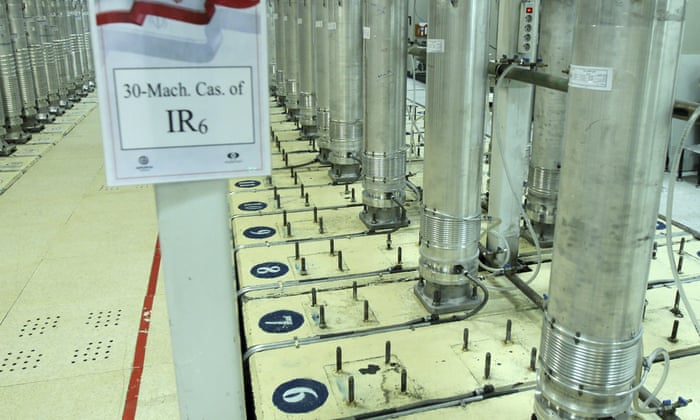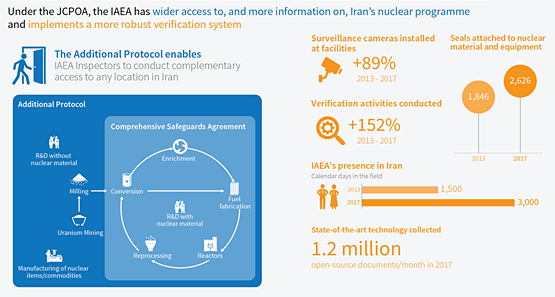Playing For Time and Advantage: Iran's Nuclear-Playful Agenda
 |
| Iran's stockpile of low-enriched uranium is well above the limit set in a 2015 nuclear agreement EPA |
"Is he [incoming U.S. President-elect Joe Biden] going to try and cut a new deal with them? Is he going to try and give them some oxygen?""I hope he just looks around the Gulf and has the clarity to know who the good guys and bad guys are. If he does that, then we will be OK.""If he does cut a deal with Iran, I think it's just going to strengthen the non-Muslim Brotherhood non-Iran countries to join forces together."Fleur Hassan-Nahoum, Deputy Mayor, Jerusalem"On 14 November 2020, the Agency verified that Iran began feeding UF6 into the recently installed cascade of 174 IR-2m centrifuges at the Fuel Enrichment Plant in Natanz.""[Iran] provided agency inspectors access to the location to take environmental samples.""The samples will be analyzed by laboratories that are part of the agency's network."International Atomic Energy Agency report"If the US implements its commitments under the UN security council resolution 2231, we will implement our commitments under the JCPoA. This can be done automatically and needs no negotiations. But if the US wants to rejoin the JCPoA then we will be ready to negotiate how the US can re-enter the deal."Iranian foreign minister, Javad Zarif"The kingdom stresses the dangers of Iran's regional project, its interference in other countries, its fostering of terrorism, its fanning the flames of sectarianism and calls for a decisive stance from the international community against Iran that guarantees a drastic handling of its efforts to obtain weapons of mass destruction and develop its ballistic missiles program."King Salman of Saudi Arabia
 |
| Iran’s Natanz uranium-enrichment facility in 2019, where it has admitted starting to use IR-2m centrifuges in breach of the 2015 accord. Photograph: Atomic Energy Organization of Iran/AP |
President-Elect Joe Biden was Vice-President in the Obama White House, as such part and parcel of the process whereby President Barack Obama signed on to the agreement that allowed Iran to mock a serious issue by signing and pledging to refrain from weapons-grade uranium enrichment; an obvious enough subterfuge allied with its continued technical work in refining rocketry which has no purpose other than to carry nuclear warheads which might not ever have to be put into active use, relying instead on intimidation of its neighbours to submit to the Iranian Republic's plans for command of the Middle East. One exception could be making good on its boast of annihilating Israel.
With its hardened underground laboratory bunkers built to withstand all but the most penetrating of munitions, Iran simply proceeded, under the direction given to the Islamic Revolutionary Guard Corps to surreptitiously continue its drive toward nuclear arms. The European Union, signees to the agreement saw fit to 'not notice' Iran's manipulative agenda to continue fostering its nuclear program's advance despite the agreement which meant nothing to Iran but an inconvenient impediment, forced upon it by an interfering West.

Saudi Arabia's Prince Turki al-Faisal spoke with Mr. Biden warning against pursuing a re-worked deal with Iran to re-enter the Joint Comprehensive Plan of Action. Such a deal would simply encourage Iran to continue developing its nuclear weapons program to spread its 'influence'. "Mr. President-elect, do not repeat the mistakes and shortcomings of the first deal", the former Saudi intelligence chief, former Ambassador to the U.S., cautioned the incoming U.S. President.
Not to be overlooked was Barack Obama's release of $1.5-billion to cement the JCPOA, a cash gift that enabled Iran to sustain and fund expansion into Syria and Lebanon, both representing a threat to Israel. Balance that against the latest assessment and report by the UN atomic watchdog concluding that Iran has fired up advanced uranium enrichment centrifuges in its underground installations at Natanz, a clear breach of the nuclear deal with major world powers.
As Iran's main uranium-enrichment site, one that President Donald Trump just recently was said to have considered bombing, the nuclear deal clearly states Iran may accumulate enriched uranium only with first-generation IR-1 machines as the sole centrifuges to be operated at its plant underground at Natanz, immune to aerial bombardment. Last week's IAEA report indicated that Tehran had a cascade installed; an interlinked cluster of advanced IR-2m machines at Natanz.
Many of the nuclear agreement's restrictions were breached virtually from day one of the accord dating from 2015 on atomic activities by the Islamic Republic, inclusive of the purity of enriched uranium and enriched uranium stocks. New and more egregious breaches reportedly resulting from President Trump's 2018 withdrawal from the agreement and the reimposition of U.S. sanctions, lifted under the accord. The IAEA report also noted that Iran has begun installing a cascade of IR-4 centrifuges, and operating 5,060 IR-1 machines.

Iran is under pressure by the IAEA and the U.S. to account for the origin of uranium particles discovered several years back at an old undeclared site Israel named as a "secret atomic warehouse", when Israeli Prime Minister drew attention to the Turqazabad site in Tehran speaking at the United Nations in 2018 at which time he urged the IAEA to visit the site that Iran called a carpet-cleaning facility.
When IAEA inspectors visited the site in 2019 taking environmental samples, they proved traces of processed uranium to be present. Ever since then, the IAEA has looked for answers from Iran where the traces came from, dissatisfied with Iran's incomplete explanations.
 |
Labels: Islamic Republic of Iran, Israel, Middle East, Nuclear Agreement, Saudi Arabia, United States, Uranium Enrichment
0 Comments:
Post a Comment
<< Home